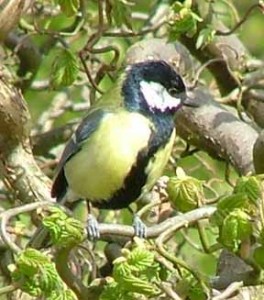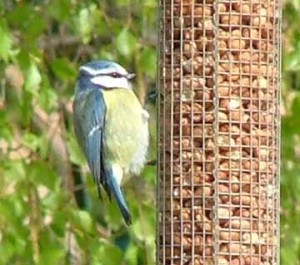
Ideas for encouraging birds to visit your school and for pupils to engage with bird life:
Putting up bird feeders around the school is anobvious way to encourage birds to visit and remain on school premises.You can use purchased bird feeders (see the RSPB shop, CJ Birdfoods or visit your local garden centre) or you can get your pupils to make their own. Here are some useful websites on bird feeders:
[dreadings feed_url=”http://delicious.com/v2/rss/redkitecomputers/birdfeeders” quantity=10 display_arrow=0 display_archive=0]
Pupils can use identification charts, books and the web to help identify what birds come to the feeders. Recording numbers of each bird, frequency of visits, most popular type of food, etc can all lead into numeracy work, spreadsheets, graph work and development of presentation skills. If you have a learning platform then pupils could research the birds that visit the feeders and start to build a Wiki about them.
Two main uses of bird cams that work well in schools are bird feeder cams and bird box cams. Bird feeder cams have the advantage of being in use all year round. Bird box cams are of use mainly during the nesting season but you can get visits to bird boxes during the colder months when birds may roost in them.
The most common bird cams are cameras that connect directly to a TV or monitor. These are restricted to displaying what is happening on a single screen. For a small amount extra you can attach your camera to the school network and make the images available to anything that can run a web browser – this can be restricted to just the school network or, if you wish, to the outside world. Just make sure that you don’t end up showing your pupils as well!
Bird cams need power to operate them so are usually mounted on the outside of a school building with a cable running inside the school to connect to the power supply and to the network but there are now wireless systems as well that operate up to 30m from your building. They are battery operated and can use a solar panel to charge the battery. In the winter months you may need an additional battery to recharge in school and swap over regularly as the solar panel may not be able to charge the battery fully. You can also fit a timer to switch of the camera during the night – though if you are using an infra-red camera in a bird box you might want it to stay switched on!
Software is also available that detects movement and captures a short video clip – so you don’t have to watch the screen all the time in order to see the birds!
 There are lots of plants that can attract birds and other wildlife to your school grounds. Lots of seed, berry and fruit bearing plants can help to feed birds through the harder weather conditions of the winter months and their flowers are usually beneficial to insects earlier in the year and these insects may also be a food source for some birds. There are lots of websites and books available about gardening for wildlife, why not set a project for pupils to find suitable plants and redesign part of the school grounds?
There are lots of plants that can attract birds and other wildlife to your school grounds. Lots of seed, berry and fruit bearing plants can help to feed birds through the harder weather conditions of the winter months and their flowers are usually beneficial to insects earlier in the year and these insects may also be a food source for some birds. There are lots of websites and books available about gardening for wildlife, why not set a project for pupils to find suitable plants and redesign part of the school grounds?
Trees and hedges are the natural habitat for lots of birds, insects and mammals. Once upon a time, not so long ago (no this isn’t a fairy story!) lots of schools had hedges around them but these have been replaced by metal fencing. Why not get pupils to plant a section of hedge (hawthorns from locally gathered seeds?) along the metal fence each year? It is relatively slow growing but by the time pupils are leaving school it will have grown sufficiently to start hiding the fence and hopefully to flower in the spring. During their last year you could arrange for someone to come and lay the hedge in order to make it grow thicker. When they do leave school they will be leaving something of themselves which will hopefully still be there when their children come to the school!
You can’t beat building a pond for attracting wildlife. Birds need to bath and drink. They also feed on the insects attracted to the pond. And as an added bonus, you will probably end up with frogs and possibly even newts.
My favourite book of the moment about helping to attract wildlife is the RSPB Gardening for Wildlife by Adrian Thomas. Perhaps worth buying for the school library? Here are some other recommendations:-
Photos copyright P Magnall

